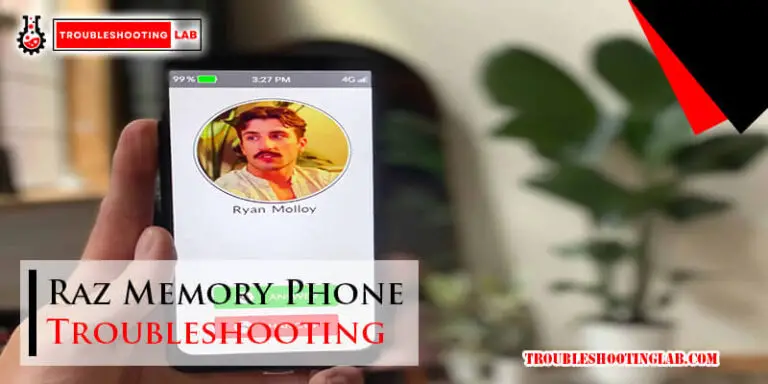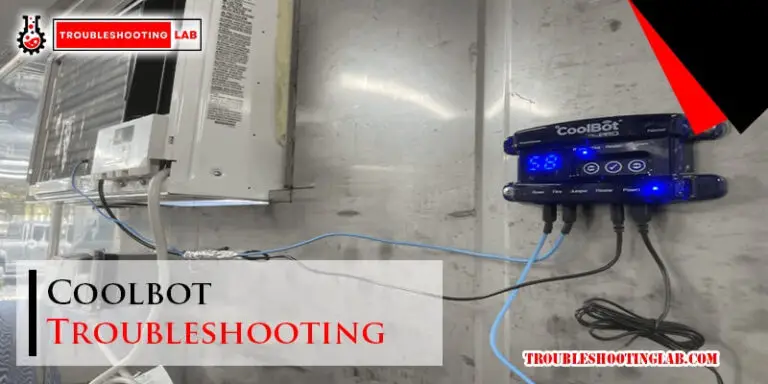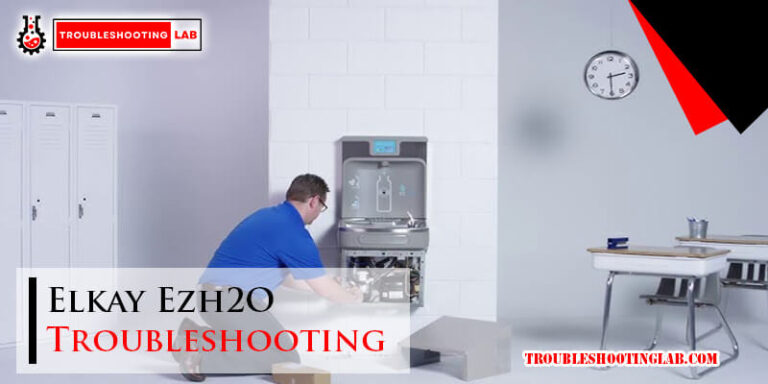Ezgo 48 Volt Charger Fix: Quick Troubleshooting Tips
To troubleshoot an EZGO 48-volt battery charger, first check if power is reaching the battery. Use a voltmeter to test the charger’s output.
Additionally, ensure the connections are secure and free of corrosion to maintain optimal performance. If the charger isn’t turning on, verify the power source and inspect for any damaged components. Regular maintenance and monitoring can help prevent charging issues and prolong the lifespan of your golf cart battery system.
By following these steps, you can effectively diagnose and resolve common charging problems with your EZGO 48-volt battery charger.
Introduction To Ezgo Charger Issues
Discover common EZGO 48-volt battery charger issues through troubleshooting methods. Identify problems like faulty connections or battery issues for effective solutions. Ensure your golf cart charger functions smoothly with these simple troubleshooting techniques.
Identifying Your Ezgo Charger Model
Locating the model number of your EZGO charger is crucial for troubleshooting. Check the charger’s label or manual for the model information.
Symptoms Of A Faulty Ezgo Charger
- No LED Light: If the charger does not display any LED lights when plugged in, it could indicate a problem.
- Intermittent Charging: Charger starts and stops randomly during the charging process.
- Strange Noises: Unusual clicking or buzzing noises coming from the charger.
- Overheating: Charger feels excessively hot to the touch during operation.
Introduction to EZGO Charger Issues: Troubleshooting problems with your EZGO 48-volt battery charger is essential to keep your golf cart running smoothly. Identifying common issues and understanding the symptoms of a faulty charger can help you address the problem effectively.
Initial Steps For Troubleshooting
Begin by checking the power source and inspecting the battery connections for any issues. Use a voltage tester to determine if the batteries need recharging or replacing. Ensure proper power supply by connecting a voltmeter to the charger and turning it on.
Initial Steps for Troubleshooting Ezgo 48 Volt Battery Charger
Ezgo 48 Volt Battery Charger is one of the most essential components of a golf cart as it keeps your batteries charged and ready to go. However, sometimes, it may malfunction or stop working altogether. In such cases, you need to troubleshoot your charger to identify the root cause of the problem and fix it. In this article, we will discuss the initial steps for troubleshooting Ezgo 48 Volt Battery Charger that will help you identify and fix common issues.
Checking the Power Outlet
The first step in troubleshooting your Ezgo 48 Volt Battery Charger is to check the power outlet. Ensure that the outlet is working correctly and supplying power to the charger. You can use a voltmeter to check the voltage of the outlet. If the voltage is below the standard level, the charger will not work correctly. In such cases, you may need to replace the power outlet or use a different one.
Inspecting Charger Connections
The next step is to inspect the charger connections. Ensure that the charger is connected correctly to the power outlet and the golf cart. Check the plug for any signs of damage, such as broken prongs or loose connections. If you find any damage, you may need to replace the plug or repair the connections. Also, check the battery terminals for any signs of corrosion or damage. Corrosion can prevent the charger from working correctly. If you find any corrosion, clean the terminals with a wire brush and apply a battery terminal cleaner.
These initial steps for troubleshooting Ezgo 48 Volt Battery Charger will help you identify and fix common issues. However, if the problem persists, you may need to contact a professional technician or replace the charger altogether. Always ensure that you follow the manufacturer’s instructions and safety guidelines while troubleshooting your charger to avoid any accidents or damages.
Battery Inspection
When troubleshooting issues with your Ezgo 48 volt battery charger, it’s important to start with a thorough inspection of the batteries. This process involves assessing the overall health of the batteries, understanding their charge levels, and utilizing a voltage tester to diagnose any potential problems.
Assessing Battery Health With A Voltage Tester
Using a voltage tester is a crucial step in determining the health of your Ezgo 48-volt batteries. To begin, ensure that the golf cart is turned off and the charger is unplugged. Then, carefully connect the voltage tester’s positive and negative leads to the corresponding battery terminals, paying close attention to the readings displayed on the tester.
Understanding Battery Charge Levels
It’s essential to have a clear understanding of the charge levels of your Ezgo 48-volt batteries. This can be achieved by checking the specific gravity of each cell using a hydrometer, or by using a battery charger with a built-in charge level indicator. By accurately assessing the charge levels, you can identify any batteries that may require recharging or replacement.
Charger Functionality Tests
When troubleshooting issues with your Ezgo 48 volt battery charger, it’s essential to perform various functionality tests to pinpoint the problem accurately. By conducting these tests, you can identify whether the charger is functioning as it should or if there are underlying issues that need attention.
Performing A Voltmeter Test On The Charger
If you suspect that your Ezgo 48 volt battery charger is not functioning correctly, a voltmeter test can help determine its output. Here’s how to conduct the test:
- Ensure the charger is plugged into a power source.
- Set your voltmeter to the DC voltage setting.
- Connect the positive and negative leads of the voltmeter to the corresponding terminals on the charger output plug.
- Read the voltage displayed on the voltmeter. For a 48-volt charger, the reading should be close to 48 volts.
- If the reading is significantly lower or higher than 48 volts, it may indicate a problem with the charger’s output.
Listening For Unusual Charger Noises
Another way to assess the functionality of your Ezgo 48 volt battery charger is by listening for any unusual noises during the charging process. Here’s what to listen for:
- Unusual buzzing or humming sounds may indicate a problem with the charger’s internal components.
- Clicking or popping noises could signal an issue with the charging circuitry.
- If you notice any of these unusual noises, it’s advisable to seek professional assistance to diagnose and address the problem.
Common Ezgo Charger Problems
When it comes to keeping your golf cart running smoothly, ensuring your EZGO 48-volt battery charger is working properly is essential. However, like any electrical device, EZGO chargers can experience issues that may disrupt the charging process. Below are some common problems you may encounter with your EZGO charger and how to troubleshoot them.
Charger Not Initiating Charge Cycle
If you plug in your EZGO charger and nothing happens, it’s likely a problem with the batteries or connections. To determine if the batteries need replacement or recharging, use a voltage tester. If the charger doesn’t initiate the charge cycle, check the connections, and ensure the batteries are properly connected.
Charger Terminating Charge Prematurely
If the charger kicks on but doesn’t charge fully or terminates the charge cycle soon after, it may indicate a charger issue. Also, if the charger makes a loud clicking noise, it could be a sign of a faulty charger. Check the battery charge to see if any power is reaching the battery. Use a voltmeter to determine the output of the charger and ensure it is producing the correct power.

Credit: m.youtube.com
Physical Inspection Of The Charger
When troubleshooting issues with your Ezgo 48 volt battery charger, a thorough physical inspection can help identify common problems. By checking for signs of corrosion and examining cable and connector integrity, you can pinpoint potential issues and take appropriate action to resolve them.
Checking For Signs Of Corrosion
Corrosion on the charger’s terminals or cables can hinder the charging process. A visual inspection of the charger and its components is essential to identify any corrosion. Look for rust, greenish deposits, or discoloration on the terminals, connectors, or cables, as these are indicative of corrosion.
Examining Cable And Connector Integrity
Inspect the cables and connectors for any signs of wear, fraying, or damage. Check the integrity of the cables and ensure there are no exposed wires or loose connections. Additionally, examine the connector pins for any bent or misaligned pins that may impede the charging process.
Understanding Charger Indicators
To troubleshoot your Ezgo 48-volt battery charger, pay attention to the charger indicators. If the green light by the battery charger receptacle isn’t coming on, it’s likely not charging. Check the battery charge by connecting a voltmeter to the charger’s clamps to determine the charger’s power output.
Interpreting The Meaning Of Indicator Lights
Understanding the charging indicators on your Ezgo 48 Volt Battery Charger can be a bit overwhelming, but it’s essential to diagnose any issues with your charger. The charger comes equipped with different colored lights that indicate the charging status. The green light indicates that the battery is fully charged, while the amber light indicates the charging process is ongoing. The red light indicates a problem with the charger, such as a faulty connection or other issues.
What To Do When Indicator Lights Don’t Come On
If the indicator lights on your Ezgo 48 Volt Battery Charger don’t come on, it could be due to several reasons. Firstly, check the connection between the charger and the battery. Ensure that the charger is correctly plugged in and that the battery terminals are clean and free from corrosion. If the connection is okay, check the charger’s fuse and replace it if it’s blown. If the problem persists, it could be due to a faulty charger, and you may need to replace it.
In conclusion, understanding the charging indicators on your Ezgo 48 Volt Battery Charger can help you diagnose any issues with your charger. If the indicator lights don’t come on, check the connection, fuse, and replace the charger if necessary. By following these simple troubleshooting steps, you can ensure your battery charger works efficiently, providing you with a reliable source of power for your golf cart.
Advanced Troubleshooting Techniques
When facing issues with your Ezgo 48 Volt battery charger, advanced troubleshooting techniques can help diagnose and resolve the problem efficiently. Below are some advanced techniques to consider:
Resetting The Charger
If your Ezgo 48 Volt battery charger is not functioning properly, try resetting it to see if that resolves the issue. To reset the charger, follow these simple steps:
- Unplug the charger from the power source.
- Wait for about 10-15 minutes to allow the charger to reset.
- Plug the charger back into the power source.
- Attempt to charge your batteries again.
When To Consider Professional Repair
If you have tried basic troubleshooting steps and your Ezgo 48 Volt battery charger still does not work, it may be time to seek professional repair services. Consider professional repair in the following situations:
- If the charger shows signs of physical damage.
- If the charger fails to charge the batteries even after resetting.
- If you are unsure about performing further troubleshooting on your own.
Maintaining Your Ezgo Charger
Troubleshoot your Ezgo 48-volt battery charger by checking for power to the battery using a voltmeter. If the charger doesn’t kick on or makes a clicking noise, it may indicate a charger or battery issue. Ensure proper connections and inspect for loose or corroded parts for efficient maintenance.
Regular Cleaning And Maintenance Tips
maintaining your EZGO charger, regular cleaning is crucial. Clean the charger with a damp cloth to remove dust and debris. Avoid using harsh chemicals that can damage the charger. Inspect the charger regularly for any signs of wear or corrosion.
Preventive Measures To Avoid Future Issues
To prevent future problems, keep your charger in a dry and well-ventilated area. Avoid overcharging the batteries, as this can damage the charger. Check the connections regularly to ensure they are secure. Consider using a surge protector to protect the charger from power surges.

Credit: www.golf-carts-etc.com
Conclusion And Additional Resources
Troubleshoot Ezgo 48 Volt Battery Charger effectively with these additional resources. Learn to use a voltage tester to check battery status and diagnose common issues for a quick fix. Gain insights on how to test and repair your charger for optimal performance.
Summarizing Key Takeaways
After troubleshooting your EZGO 48-volt battery charger, it’s important to remember a few key takeaways. First, always check the connections and ensure they are secure and free from corrosion. Additionally, use a voltage tester to determine if the batteries need replacement or recharging. If the charger makes a clicking noise, it may indicate a battery charger issue. Lastly, be mindful of the green light on the charger receptacle, as its absence may signal a charging problem.
Where To Find Replacement Parts And Service
For replacement parts and service for your EZGO 48-volt battery charger, it’s best to consult authorized dealers or reputable online retailers that specialize in golf cart accessories. Ensure that the parts are genuine and compatible with your specific charger model. When seeking professional service, consider reaching out to certified technicians or contacting the manufacturer for authorized repair centers.
Frequently Asked Questions
Why Wont My 48 Volt Golf Cart Charger Come On?
If your 48 volt golf cart charger won’t come on, it’s likely a problem with your batteries or connections. Use a voltage tester to determine whether your batteries need replacement or recharging. Check the battery charge to see if any power is reaching the battery.
Connect a voltmeter to the charger’s negative and positive clamps to determine how much power the battery charger is producing. Make sure the charger and cable ends are clean and free of corrosion.
How Do I Know If My Golf Cart Battery Charger Is Bad?
To check if your golf cart battery charger is bad, use a voltage tester to check battery levels. If the charger doesn’t fully charge or makes a loud clicking noise, it may be faulty. Also, ensure the charger is clean and plugged into a working outlet.
How Do You Test A 48 Volt Golf Cart Charger?
To test a 48-volt golf cart charger, use a voltage tester on the batteries to check power. If the charger doesn’t fully charge or makes a loud clicking noise, it may be faulty. Ensure proper connections and outlet power. Consider professional help if issues persist.
Does The Ezgo Golf Cart Charger Have A Fuse In It?
Yes, most Ezgo golf cart chargers do not have a fuse in them.
Conclusion
Troubleshooting your EZGO 48-volt battery charger is crucial for maintaining your golf cart’s performance. By following the troubleshooting guide, you can identify and resolve common issues, ensuring that your charger operates effectively. Regular maintenance and prompt resolution of any charging problems will prolong the lifespan of your golf cart’s batteries and charger.





